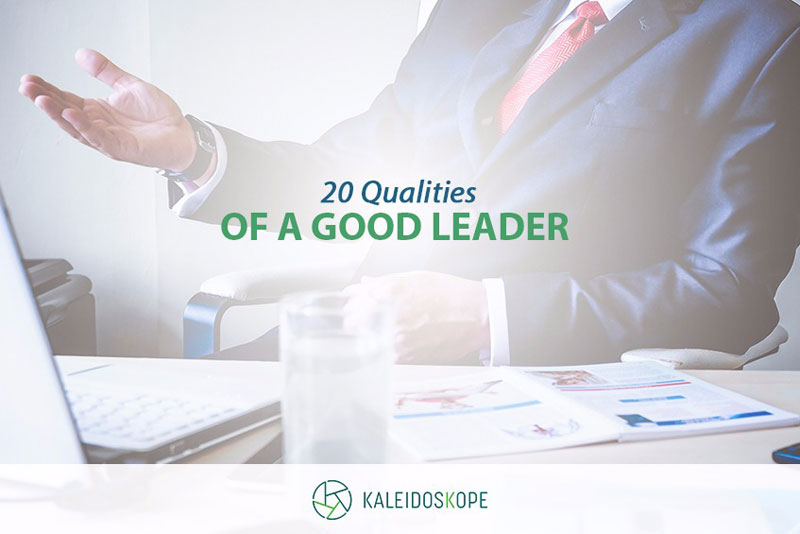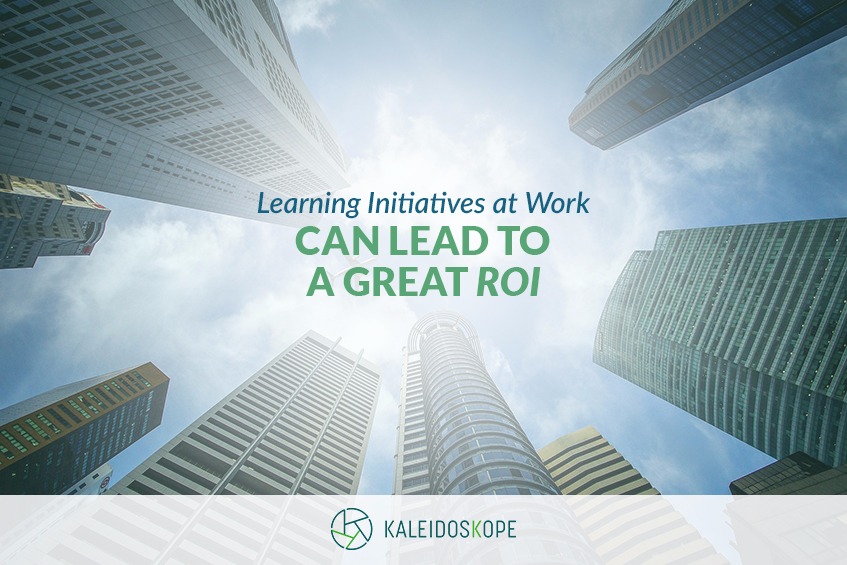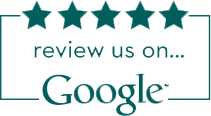Leadership Embodiment – The art of grit and grace to influence

Leadership. This space can give us a bump or a boost. It can put us in a concerned corner or an exuberant expanse – flight, fight, freeze, flurry, fierce or force.
It is the “Power” that comes into play in our very human, and subconscious field. The kind of relationship we have with this power determines what kind of a leader we show up in that space.
Power is energy. We have capacities to shift, express, expand and share. Once we can recognize how to work with it, power becomes a familiarity that we can mindfully and certainly practice. Life with leadership would be an easier place to embrace.
What energy are you, or your leaders emanating? Especially when leaders have to meet business’s speed, exacting demands, increasing complexity and escalating uncertainties.
Shifting the focus
“Change occurs when one becomes what he is, not when he tries to become what he is not,” says Arnold R Beiser.
It is often not what you “try to do” to lead. What matters more is “who you are” as you broadcast your personal leadership energy and presence, gaining the trust, faith and confidence of your team.
You may recall sometimes how you or someone says, “Oh, I like his energy!” or “She has great presence. Very powerful.”
When you can shift the lens of your leadership attention – from seeing it beyond skill sets that need to develop through external (efforts) to seeing it as the internal energy that you already have and already are (effortless). It is a different personal developmental view. You can begin to see power as your inner resource that you can tap into and call it out to dance with the situation.
Energy has current and fluidity.
Broadcasting leadership presence
“Presence influences the room. Which room? The room you are in,” says Jess Tansutat, Leadership Embodiment associate trainer in Asia.
Leaders with presence can hold a space, navigate conversations and manage relationships skillfully. Presence can be expanded, stretched, shrunk or collapsed.
In today’s busy work environments, it doesn’t take much to get pushed over the cliff. We feel faster than we think. We react much faster than we think. We are at the mercy of our emotions. We have to deal with team members, business targets, organisational objectives, personal challenges. Even the smartest most visionary leaders, once triggered, can lose their stands and get reactive. When leaders do that, they feel separated. Their teams feel separated, and are sometimes broken. Power and trust in shared space and common ground are reduced.
It is a mechanism. A leader’s emotions, expression, discernment and language impact, and affect team outcomes. When emotions and defenses are stirred up in situations, they have a negative impact on a leader’s presence, draining his energy and limit his effectiveness.
What would you do to reduce the energy drain on your leadership effectiveness?
Bridging the gap with self-regulation
Leadership requires intrapersonal, interpersonal and group competencies, as well as self-awareness, emotional self-control and relationship management.
As the old saying goes, “Just because it’s common sense, doesn’t mean it’s common practice.” Under pressure, we are even more likely to forget even the most basic things.
Self-regulation helps the body’s nervous chemicals and e-motions (energy in motion) to calm down and bring leaders back to the state of presence so they can make difficult decisions, and manage conversations and conflicts in a more expansive way. Self-regulation is a core practice in the Leadership Embodiment model developed by Wendy Palmer, co-author of Leadership Embodiment: How the way we sit and stand can change the way we think and speak.
Leadership Embodiment approach
The principle of Leadership Embodiment addresses the role of the body in leading effectively. It sees our body as a place to contact our internal resources for self-management so we can process our emotional response and recover from our physiological stress patterns that affects our leadership presence. This is a body-oriented learning process of leadership, beyond the rational mind.
As with many of the other schools of embodiment, it developed out of the combination of the Japanese martial art, Aikido, and mindfulness. The model has been refined for use in business and the performance context of an organization. It works with awareness and focus, and the ability to influence one’s state of being with ease.
The core of the practice is to recognize being in a stressful state and swiftly self-regulate into a flow-state.
As Leadership Embodiment co-author Janet Crawford says, “Most of what we do is neither conscious nor volitional. Until we become aware of what drives us, be it thoughts, emotions, or body dispositions, we are powerless to change. The body takes a shape before the mind consciously identifies a thought or feeling. Our physical being is the most direct point of intervention. How you sit and stand will change the way you think and speak.”
Leadership Embodiment shares an alternative and practical perspective to develop leaders to be in a constant state of power and presence, dancing between grit and grace. Strength and gentleness. Will and kindness.
Grit: Capacity to “take”
This is resilience. Will becomes a source of power, firmness and ability to persevere in the face of challenges. A leader with grit will show capacity to take up a space, taking on responsibility for their words, and actions, taking it on personally and acting on behalf of those he cares about.
Will also has the quality of courage. When it comes to ability to influence our interaction, agreement or conflicts with others, how are we responding to make courageous conversation and courageous acts? Can we develop the capacity to speak what is true within healthy boundaries and inviting collaboration?
Grace: Capacity to “care”
Amy Cuddy in her TedTalk suggested that to influence others, we connect first, then lead. You become what you practise, or do more and more of. What if having an ability to broadcast warmth and care can become part of effective and charismatic leaders? You connect because you care. You become a support and nurturing source for the team. Leading this way means you know how to step back and give space for your team to voice their ideas and optimise their potential, while holding onto the power to stay in contact. The energy of warmth influences trust and trust offers a wonderful ground for future possibilities.
Leadership effectiveness is a choice
The way you choose to influence others has its roots in the intrapersonal layer. By cultivating capacities in taking and caring, your self-awareness, social awareness and relationship management expand. Even if you are not directly in a leadership role or title, developing these capacities are still relevant to your own performance and influence in meeting team and organizational demands.
When you consider HR processes, cultural practices and behaviors, what challenges does your company face? Back-to-back meetings, difficult conversations, disappointment, taking feedback, speaking up, dealing with conflicts, etc.?
You have the power and the choice to help in developing transformative workplace relationships and to move your team into a thriving culture.
Our Leadership Embodiment specialist and expert, Jess Tansutat, will be happy to speak with you.
Jess is a compassionate and curiosity-driven individual with the propensity to initiate positive change in others. She seeks to inspire, and be inspired by, people who inquire to discover their personal boundaries and values, and expand their qualities to respond to transitions and uncertainty skillfully and creatively.
She creates a space for invisible to visible learning, inside-out approach. Together with her clients, she addresses concerns, uncovers what they really care about, challenges assumptions, acknowledges capacities and limitations and finally explores new possibilities so they can respond to change from a greater space.
Her purpose is to help others explore their spectrums of personal and professional excellence through inner perspectives, power of identity, self-awareness and authenticity.
If you’d like to learn more about how you can take the Leadership Embodiment approach to managing your own team or creating a thriving culture for your organization, get in touch with us at Kaleidoskope, today.
Related Blogs
The Mid-Year Reset: Mindful Reflection Over Resolutions
We’ve all witnessed leadership failures in politics, business, and sports. A leader’s mistake and subsequent fallout reveal much about leadership, or the lack thereof. A recent incident involving the US Defence Secretary and other high-ranking officials is a stark warning, underscoring a critical gap within organisations that leadership training can bridge.
Leading through the whirlwind: Building Leadership Agility in Uncertain Times
We’ve all witnessed leadership failures in politics, business, and sports. A leader’s mistake and subsequent fallout reveal much about leadership, or the lack thereof. A recent incident involving the US Defence Secretary and other high-ranking officials is a stark warning, underscoring a critical gap within organisations that leadership training can bridge.
Start Your High-Performance Learning Journey
WITH KALEIDOSKOPE NOW!
You know how leaders are often called upon to be strong and decisive? What is adaptive leadership? Learn more about our Leadership course!
Do You Practise Adaptive Leadership? Your Organisation Needs You To.
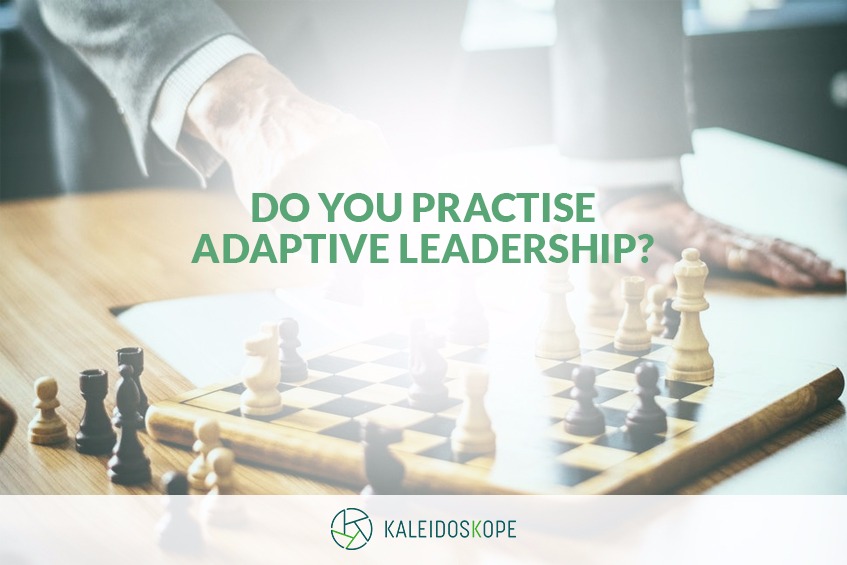
Business Storytelling – A Critical Skill For Great Leadership
You know how leaders are often called upon to be strong and decisive? Someone people can look up to, or who can motivate others to do their best. Someone who knows what it takes to succeed, and can take the rest of the team with them on the way to success.
But disruptions and transformations continue to take place at a breakneck pace–a scenario that Singapore is all to familiar with. As such, the burdens that leaders need to carry on their shoulders, and the weight of the decisions that they need to make, increase tenfold. This means that today, more than ever, organisations are calling on their leaders to be adaptive–a trait that can only be optimised through leadership training.
What is adaptive leadership? And why does everyone in your organisation need you to practise it? Find out as we also take a look at what adaptive leadership can do to help an organisation grow, and what you have to do to become an adaptive leader.
Not a Position, but a Practice
Adaptive leadership is a systematic approach to leading that allows leaders to respond to changes in a situation that could have a major impact on their organisations. It’s the approach, or the act of leading that takes centre stage, instead of the title a leader happens to have.
While researching at Harvard University, leadership experts Dr. Ronald Heifetz and Marty Linsky developed the adaptive leadership framework to show leaders how to get everyone—not just key decision-makers—involved in the problem-solving process.
These experts identified the kinds of problems organisations need to solve, and what leaders and their teams need to solve them. These problems or adaptive challenges are highly technical and often recurring problems that aren’t always well-defined or have clear-cut solutions.
Instead of merely coming up with solutions on their own and handing them over to staff to carry out, adaptive leaders facilitate collaboration that encourages contributions from staff as well as management to develop the solutions. By empowering everyone to act in becoming part of the solution, everyone becomes a leader in their own right.
Breaking Away with Business Agility
Because this practice breaks away from the traditional, hierarchical model of leadership, adaptive leadership may feel awkward or uncomfortable at first. But since many of the changes that today’s organisations have to deal with need a quick response, adaptive leadership gives them a framework for giving that response without having to go through bureaucratic red tape.
This is where you’ll find that adaptive leadership and business agility go hand in hand. Indeed, Adaptive Leadership: Accelerating Enterprise Agility author, Jim Highsmith, writes that an adaptive leader must develop an agile mindset.
With agility in mind, adaptive leadership can also be defined as a set of principles as well as practices that drive organisations to keep learning, which equips them with the capabilities for adapting and thriving in the face of change.
Among these practices is distinguishing the essential from the expendable and breaking away, again, from the status quo—if it means finding a better, more efficient way to do things and to solve problems. In so doing, the entire organisation and every individual in it will also be able to evolve slowly, but surely.
Organisations Need Adaptive Leadership
This evolution is precisely why organisations need adaptive leaders, because only the organisations that are able to respond effectively and efficiently to disruptions and other changes will survive and become profitable. Standard operating procedures or technical expertise just aren’t enough anymore for resolving problems or adaptive challenges.
With adaptive leadership, you create a whole new corporate culture that champions experimentation, discovery and innovation in problem solving. Team members acquire new skills and behavioural patterns alongside their managers as they take a renewed, more positive approach toward work.
Collaborating on a regular basis also enhances working relationships within teams, breaking down barriers commonly found in top-down corporate structures and enabling a free-flowing exchange of ideas. Seeing that their contributions are welcome and appreciated is also a real morale- and confidence-booster among the staff on any level.
Your teams readily turn failures as well as successes into opportunities for learning, which also include an awareness of industry trends and developments. By keeping close and constant tabs on what your target market is looking for, your organisation will be able to keep on providing better service and improving your bottom line.
Becoming an Adaptive Leader
Adaptive leadership as a leadership style isn’t acquired overnight, but you can start adopting the approach by taking note of what your organisation needs you to do whenever there’s an adaptive challenge to be faced.
- Assess the problem at hand. Take careful stock of what needs to be done, and keep on gathering and analysing data to inform your decisions even as you act. Get multiple interpretations of the issue to get a sense of how urgent or how soon you need to find a solution.
- Assess the people on hand. Take careful stock of who is capable and available to tackle the problem, including yourself. Just as important is taking note of who are affected by the issue, as well as the “default response” they may have in this situation.
- Ask for insights. Remember when we said that adaptive leadership was about getting everyone involved? Well, now is the time to do it. Discuss your findings and thoughts on everything you took stock of and get their perspectives of the issue before working together to find that solution.
- Promote the solution. Once you’ve collectively decided on what needs to be done, make sure everyone believes in the solution and has confidence in its efficacy. In inspiring your team or the entire organisation, make sure you’re delivering the right message in terms they can easily understand.
- Monitor and adjust as needed. Give the solution enough time to work while keeping an eye on how it’s working out for everybody. Be sure to take note of what worked and what didn’t, and to again involve everyone in gathering feedback and refining the solution.
In advocating the development of an adaptive or agile mindset, Highsmith says a leader must be open to change and be willing to explore and to create a vision. An adaptive leader must also know how to facilitate discussion and teamwork, and have the courage to view issues and possible solutions, even if they might seem to be contradictory.
We know that’s a lot to take in, but becoming the adaptive leader your organisation needs is possible with tailor-fit leadership training initiatives. Talk to us at Kaleidoskope to discover how you and your team can benefit from our Adaptive Leadership programme, today.
Leadership Training
- Business Storytelling – A Critical Skill For Great Leadership
- Want to make history as a leader? Try studying these great leaders from history
- Solution Focused Leadership Coaching
- Leading the Way for Leaders: How Your Leadership Can Continue to Evolve
- How to Manage a High-Performance Team Made Up of Different Personalities
- Have You Mastered the 4 Leadership Fundamentals?
- Do You Practise Adaptive Leadership? Your Organisation Needs You To
- Why A Good Leader Needs To Understand Business Agility
- 20 Qualities of a Good Leader in Times of Change (A Checklist)
Corporate Training
- Why is your training, boring?
- Learning Initiatives at Work CAN Lead to A Great ROI. Here’s How
- Corporate Training Doesn’t Seem to Be Working? You Need an HPLJ Approach!
Facilitation Training
- Facilitate a High Impact Training Course with Accelerated Learning
- Accelerative Learning – A Better Return on Training Investment (Part 1)
- Accelerative Learning – A Better Return on Training Investment (Part 2)
- Accelerative Learning – A Better Return on Training Investment (Part 3)
Virtual Learning
Start Your High-Performance Learning Journey
WITH KALEIDOSKOPE NOW!
Find out what makes training boring and factors affecting training impact and efficiency. Click the link the link to know more.
Impact and Efficiency: Why is Your Training, Boring?

Let’s face it: the battle for people’s attention is an uphill one. It can be tough to get an audience to listen, let alone learn. No matter how hard you try, sometimes, it just seems impossible to get trainees to not just truly learn something, but to be eager to put what they’ve learned into practice.
To find out what makes training
Get the most out of training events with David Turberfield.
Look out for these liabilities that can suck the life out of your training.
The number of countless, seemingly endless training sessions conducted across industries makes it relatively easy to determine exactly what contributes to their boring-ness.
Some of the most common denominators boring training events
- Reading from slides. Simply reading text on a slide instead of explaining it tends to cause your audience to stop listening and their minds to shut down. After all, they can just as easily read it for themselves (and more often than not, much faster than you can read it aloud).
- Too much text on slides. Unsurprisingly, text-heavy visuals are heavy on the eyes, which is no help at all in keeping your listeners awake, especially if your presentation happens to be scheduled in the afternoon.
- Spending too much time preparing slides, and not enough time getting ready for the actual presentation or training activity, itself. Many trainers make the mistake of equating slide preparation with preparation for the act of presenting.
- Forgetting about the trainees.
Still other trainers get so caught up in preparing what the trainees need to know, that they overlook the need to put themselves in the trainees’ shoes. As a result, they forget to ask questions such as, “Would the audience find this interesting?”
- Speaking longer than 10 minutes. Studies suggest that people being presented to (as is usually the case during training events) really only pay attention for about 10 minutes, after which their concentration and engagement tend to wane.
It’s no accident that the first three factors involve the use of slides; indeed, some industry experts recommend doing away with slides altogether during training. Still other experts lay the blame not on the slides themselves but on the way the slides are used, that is to say, using them as cue cards instead of aide-
But pretty much anyone who’s ever written about the pitfalls of keeping training and presentations engaging agrees that the audience’s attention span is the most important factor for consideration—arguably making No. 5 the most probable cause of boring training sessions.
Get the most out of training events with David Turberfield.
Leverage these learning hacks to breathe new life into your training.
Now that we’ve identified the causes, we can now look for the cures. If the way you use slides during training is the problem, better preparation is the solution—which means knowing what you’re teaching inside and out so as not to need slides.
If you must have the information you wish to impart on hand, keep them in a few, succinct bullet points in the space for notes on each slide, instead of on the slide itself. This way, they won’t be visible to your trainees.
Feel iffy about going in without slides? Try using the slides more for visual aids rather than text. Slides are ideal for showing tables, graphs
But as the challenge of your listeners’ “10-minute limit” is paramount, here are some particular tips to help you overcome it:
- Connect with your audience. If eye contact isn’t your thing, try looking just above their heads to give the impression that you are looking at them. If audience size permits, call people by name or choose people to participate in demonstrations. Try using open questions to create discussion and have your attendees speaking, being heard and listening to each other.
- Learning by design. Design your material to be less
slide based and more conversational. Convert the material into scenarios that can be used forgroup based discussion and feedback, have the participants doing the work. Have them feedback in innovative in fun ways thatgets them thinking and their colleagues really paying attention.
- Once upon a time… Storytelling has always been an effective and engaging way to hold people’s attention and impart information. Use stories to illustrate or demonstrate a point, whether they’re taken from real life or just made up.
- Break it up to wake them up. Once your presentation hits the 10-minute mark, let your audience take a break. This doesn’t have to be a literal bathroom or coffee break; it could also mean a video after 10 minutes of slides, for instance, an exercise, discussion or quick Q&A session.
- Not more than four. Studies also suggest that people can only process and remember four new pieces of information at a time, so there’s really no point in cramming in so much info in one go. Try to plan the training event in such a way that only four or
less lessons are taught at a time.
- Ditch the script. While the essential preparation and rehearsal for a training session may involve some
memorisation , it helps immensely to not make it sound like you memorized a script. To this end, ad-libbing helps make things sound a lot more natural and more likely to hold your audience’s interest.
The tips are just a tiny sample of what you can do you to make sure everyone at your
Get the most out of training events with David Turberfield.
ICF Associate Certified Coach and NVW Certified Integral Coach, David Turberfield has 25 years of experience showing trainers and facilitators how to hold an audience’s interest, and to make sure they actually learn.
As an approved Accelerative Learning Facilitator who has led High Impact Facilitation Train the Trainer courses, David has conducted workshops such as
- Shell China Exploration & Production Company (
SCEPCO ) Safety Summit, Chengdu, China - Bayer Annual HSE Workshop, HCMC, Vietnam
- Samsung C&T CEO Forum, Seoul, Korea
- 3M Annual APAC EHS Leadership Workshop, Singapore
- AES APAC Leadership Workshop, Masinloc, Philippines
- GDF Thailand Leadership Workshop, Chonburi, Thailand
- Micron APAC Leadership workshop, Taichung, Taiwan
David is the lead facilitator for the Accelerated Learning (AL) course at
Leadership Training
- Business Storytelling – A Critical Skill For Great Leadership
- Want to make history as a leader? Try studying these great leaders from history
- Solution Focused Leadership Coaching
- Leading the Way for Leaders: How Your Leadership Can Continue to Evolve
- How to Manage a High-Performance Team Made Up of Different Personalities
- Have You Mastered the 4 Leadership Fundamentals?
- Do You Practise Adaptive Leadership? Your Organisation Needs You To
- Why A Good Leader Needs To Understand Business Agility
- 20 Qualities of a Good Leader in Times of Change (A Checklist)
Corporate Training
- Why is your training, boring?
- Learning Initiatives at Work CAN Lead to A Great ROI. Here’s How
- Corporate Training Doesn’t Seem to Be Working? You Need an HPLJ Approach!
Facilitation Training
- Facilitate a High Impact Training Course with Accelerated Learning
- Accelerative Learning – A Better Return on Training Investment (Part 1)
- Accelerative Learning – A Better Return on Training Investment (Part 2)
- Accelerative Learning – A Better Return on Training Investment (Part 3)
Virtual Learning
Start Your High-Performance Learning Journey
WITH KALEIDOSKOPE NOW!
Let’s take a look at what accelarated learning is, how it works, and how it can make a huge difference in your own facilitation training course. Learn more.
Facilitate a High Impact Training Course with Accelerated Learning

In Singapore, corporate leadership development is a necessity, but how engaged is your organisation with its learning journey, really? If you know what it’s like to sit through a training session wondering when in blazes it was going to end, read on.
Whether you’ve had to attend because your boss said so, or even if you had to be the one to do the actual training, regular, run-of-the-mill training can be a chore. Yes, even for the very people who have to get up there in front of a roomful of people, hoping against hope that their audience doesn’t fall asleep and actually learns something, this perception of training can be very real.
The good news is that “training as a chore syndrome” for both trainer and trainee can also be overcome. And that’s where Accelerated Learning or AL steps in.
Now, don’t get carried away by the “accelerated”, as this type of learning isn’t only about picking things up faster. AL in corporate learning initiatives is focused on high impact training where training session participants are excited by the learning process, and can’t wait to get out there and apply what they’ve learned.
Let’s take a look at what AL is, how it works, and how it can make a huge difference in your own organisation’s training programmes.
The Most Advanced Learning Approach
Neurology and learning experts recognise AL as the most advanced learning approach used in organisations today. With its focus on de-mechanising and re-humanising the learning process, AL provides a holistic experience that is highly engaging, motivating and effective. AL is based on the principle that people learn better when they participate in the learning process.
The end goals of an AL-facilitated training session include
- Guiding participants to learn from their experiences and from others in their workplace
- Teaching participants to apply the skills, concept and attitudes they’ve learned
- Creating a comfortable environment to allow high-engagement learning to take place
Studies show that applying AL to training courses results in maximised learning retention and efficiency, as well as a better return on investment.
How does Accelerated Learning work?
To enhance the learning experience, AL combines fun and seriousness in ways that produce the most positive results. As an entirely results-focused approach, AL isn’t “fun for fun’s sake”, nor is it stoic or inflexible.Training methods using the AL approach adjust to the subject matter and the learners themselves at a particular organisation.
The Accelerated Learning Cycle is made up of five distinct phases:
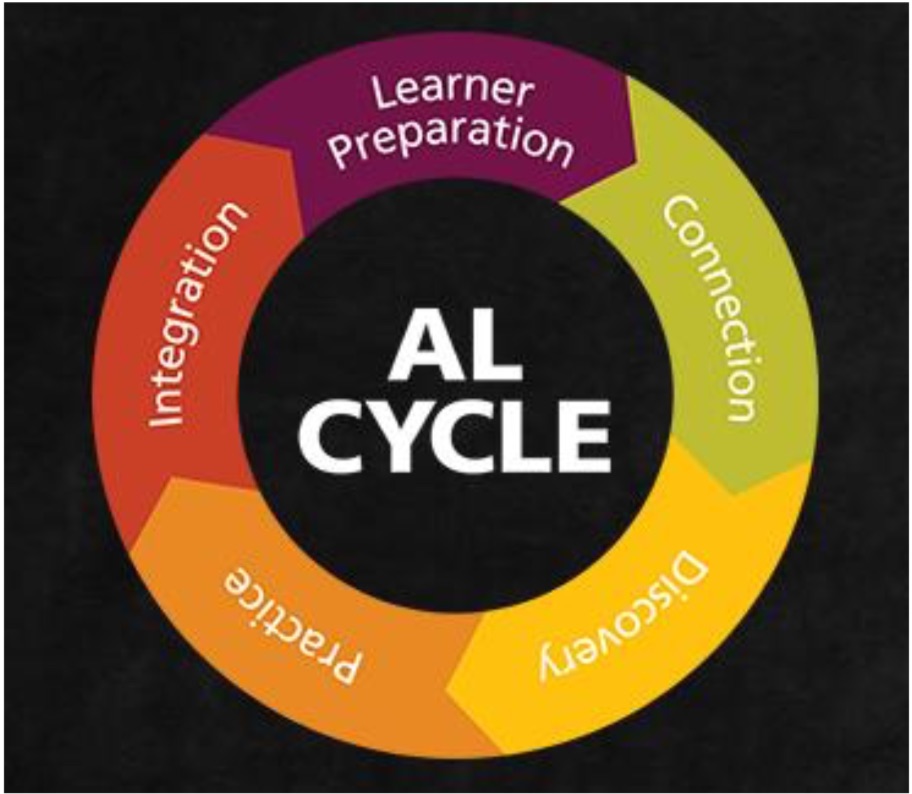
- Learner Preparation provides logistical information to prepare for participants.
- Connection creates a safe, positive learning environment that connects participants to the learning.
- Discovery presents new material to allow learners to discover and develop new information in creative, interactive and memorable ways.
- Practice is where learners begin to use the new material in controlled and structured activities, and the facilitator passes the baton to the learners as they demonstrate increasing mastery in creative and individualised ways.
- Integration or Mastery Demonstration is where learners use interactive methods to “teach back” what they have learned.
Development psychologist and professor Howard Gardner’s Multiple Intelligences (MI) theory is an Accelerated Learning model that focuses on how information is processed and used to solve problems. It allows a facilitator to adjust to needs of individual participants based the kinds of intelligence they have or learning methods they prefer.
Similar to MI is another AL model, the Audio, Visual, Kinesthetic (AVK) Learning Modalities, which focuses on the sensory channels whereby a person receives and stores information.
It ALL Depends On the Trainer
How much impact AL has on the training event depends on the drive and skill of the trainer. An AL facilitator needs to encourage involvement by showing a genuine interest in the participants, and make the participants feel free to comment and ask questions. The trainer has to constantly obtain their feedback about the training and be ready to respond to their needs.
There are four key skills for Accelerated Learning facilitation:
- Listening involves active listening, developing listening skills, and being aware of the barriers to effective learning.
- Questioning involves stimulating discussion and encouraging dialogue using questioning techniques in facilitation, and knowing which types of questions to ask.
- Attending involves eye contact, facial expression, body language and gestures, as well as paying close attention to the tone and pace of one’s voice and movement so as to hold the participants’ attention and maintain control of the session.
- Observing involves watching the body language of the participants and making inferences, as well as taking action based on these inferences to carry the learning forward.
It’s up to the trainer to create an optimal learning environment, which is possible by remembering that learners learn best when they are relaxed, and information is presented whilst involving their emotions in a positive way.
This, in turn, takes place when the facilitator’s presentation combines visual, auditory and physical elements that encourage the participants to use their learning and thinking skills to the full. These physical AL elements include the classroom set-up, which comprises the seating arrangement, tables, walls, floors and teaching materials.
The music you play during the training session is another AL element that can have a positive effect on the participants’ learning. It’s a good idea to prepare a selection of music for the start of the session, breaks, activities, reflection, celebration, and wrap-up.
At Kaleidoskope, we’re committed to working closely with you to support your training and facilitation programmes long after your training event. We’ll be checking in with you regularly with coaching and workshops, as our experience in corporate learning initiatives shows this kind of engagement is crucial to the continuing development of your event’s participants.
Our course facilitators have over 20 years of experience working with leading companies on transferring professional facilitation expertise to trainers and presenters. Their experience includes advanced facilitation skills, high impact training, and the facilitation of hands-on training programmes.
Professional coach, speaker and high impact facilitator, David Turberfield, has 25 years of training and facilitation experience primarily in Asia for some the world’s leading companies in various industries. As a certified Accelerative Learning Facilitator, David is the lead facilitator for our AL course.
Accelerate your in-house training events with Kaleidoskope. Talk to us today to find out how—becoming a better facilitator is just a click away.
Leadership Training
- Business Storytelling – A Critical Skill For Great Leadership
- Want to make history as a leader? Try studying these great leaders from history
- Solution Focused Leadership Coaching
- Leading the Way for Leaders: How Your Leadership Can Continue to Evolve
- How to Manage a High-Performance Team Made Up of Different Personalities
- Have You Mastered the 4 Leadership Fundamentals?
- Do You Practise Adaptive Leadership? Your Organisation Needs You To
- Why A Good Leader Needs To Understand Business Agility
- 20 Qualities of a Good Leader in Times of Change (A Checklist)
Corporate Training
- Why is your training, boring?
- Learning Initiatives at Work CAN Lead to A Great ROI. Here’s How
- Corporate Training Doesn’t Seem to Be Working? You Need an HPLJ Approach!
Facilitation Training
- Facilitate a High Impact Training Course with Accelerated Learning
- Accelerative Learning – A Better Return on Training Investment (Part 1)
- Accelerative Learning – A Better Return on Training Investment (Part 2)
- Accelerative Learning – A Better Return on Training Investment (Part 3)
Virtual Learning
Start Your High-Performance Learning Journey
WITH KALEIDOSKOPE NOW!
Are you a good leader? If so, business leaders must have a firm understanding what true business agility is. Click the link to learn more!
Why A Good Leader Needs To Understand Business Agility
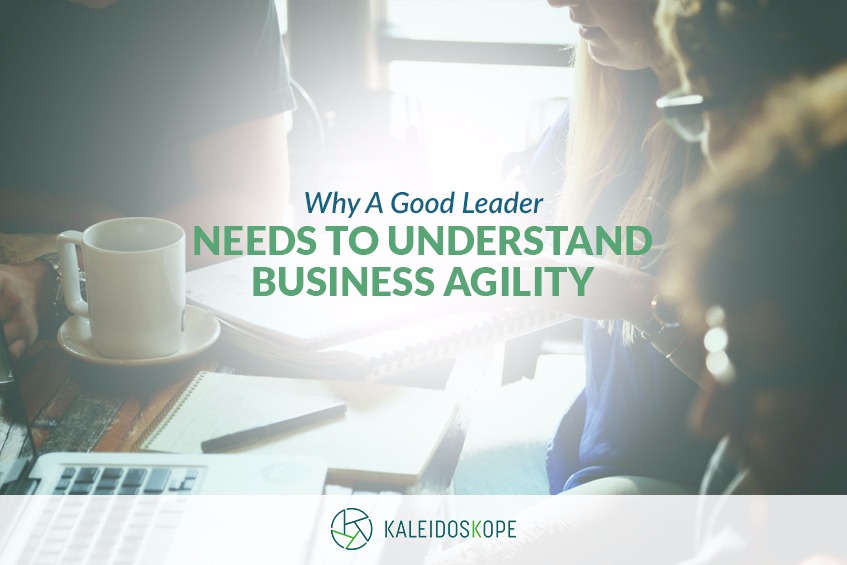
Think of your organisation as a dodgeball team—you’ve got competitors, economic uncertainties, technological developments, evolving consumer needs and a host of other challenges coming at you at a rapid-fire pace. And just like in dodgeball, it’s the nimble organisations which are quick on their feet that emerge victorious.
The ability for businesses to respond and adapt quickly in the face of constant economic whitewater is a given, but what business leaders must do to enable this begins with understanding what true business agility is.
Let’s take a look at the hallmarks of an agile organisation that would thrive in Singapore and across the globe. Read on to know how leadership training can help your own organisation develop its own business agility.
Not just Flexible, but Agile
The largest challenges are often more easily overcome when broken down into smaller, more manageable components. This, in essence, is the Agile business methodology, which focuses on delivering value via an incremental build up rather than a one-fell-swoop delivery; processing each component in short, regular cycles.
Each Agile practice takes cues from Agile principles, which include simplicity, self-organising teams, regular reflection and adaptation, and a sustainable development pace. Customer satisfaction is the highest priority in Agile, which also encourages face-to-face conversations as a best practice. It is also important that projects are built around motivated staff.
As your business people and teams collaborate, they find themselves welcoming changing requirements and devoting continuous attention to technical excellence. Such Agile practices have been shown to provide a greater ROI.
A Lean, Mean Agile Machine
If a big challenge is broken down to make it easier to take on, the process for taking it on may need to be trimmed down, too. Lean is all about giving customers maximum value with minimal waste, or as few resources as possible.
On top of waste elimination, Lean principles include building in quality, creating quality, deferring commitments, fast delivery, and overall optimisation.
Both Lean and Agile work together in developing an organisation’s business agility. Lean prioritises the development of the skills needed to provide value with the least waste, while Agile emphasises the development of the process needed to provide value in an uncertain or rapidly changing environment.
Being Lean and Agile isn’t Enough
While Lean and Agile play key roles in becoming an agile organisation, business agility is far more than a combination of both methodologies. Business agility goes a step further to focus on developing people—making sure that the organisation is constantly learning and guided by adaptive leadership.
As a “business agile” organisation, you’ll continue to learn as you find people-centric ways to come up with innovative solutions for their needs, as well as product-centric alternatives to improve the way things are done. You’ll likewise be following a market-centric business model to get the most value possible out of your business.
As a result, your organisation will be able to understand your customers better, and know how to delight them. You’ll be able to create higher quality products and services, and to get them out into the market faster. More importantly, you’ll be able to adapt more readily to any changes in the market.
Google, the US Food and Drug Administration (FDA) and the Federal Bureau of Investigation (FBI) are just some of the many organisations that have benefited from business agility.
Developing Business Agility
Just like a dodgeball or any sports team, it falls to the coach or the team leaders to know what the players need to keep on their toes and stay in the game. As the leader of your organisation, you’ll need a firm grasp of the culture and mindset that comes with being business agile.

Take stock of your current culture, operations and management thinking, and create a model for transforming your organisation into an agile one. You will then need to learn the techniques to improve your current practices. Some of those techniques include
- Value stream maps, a Lean method for streamlining processes
- Kanban, a way to organise processes to identify problems and priorities
- A3, another Lean method for problem solving
In learning these techniques, going back to the beginning of business agility as an approach is a great help, as this will show you how it came about and why it’s proven to be so effective. You’ll also have to go back to what your customer’s needs are, what your competitors are doing, and what the market looks like as these continue to evolve.
It will also be up to you to foster a spirit of innovation within your organisation, making it a place where new ideas are welcome and experimentation is encouraged. You’ll recognise how value needs to be measured, and how all your processes have to be reframed in terms of their performance in creating value for your customers.
Perfecting Personal Agility
As you steer your organisation towards developing business agility, it follows that you’ll need to develop your personal agility and build your personal brand.
In becoming the quick, decisive and highly adaptable leader your organisation needs, it helps to bear in mind that anything can happen at any given time. That way, you won’t be completely caught off guard and you’ll always be ready to deal with disruptions as they take place.
You must also nurture your ability to make the most out of every opportunity to learn from your staff and to gain feedback and insights to help you in decision-making. This means becoming a better listener, knowing the right questions to ask, and having interpersonal agility or knowing how to adjust to individuals with different needs and personalities.
While your experience is invaluable to finding solutions, don’t let it be your only point of reference. You need to be open to new views knowing that what may have worked yesterday may not be the best solution today. You also need to know how to let go of options that aren’t working out, even if it means letting go of something that has worked in the past.
This relates to enhancing your own learning agility, or the ability to learn from mistakes or failure. While many leaders would much rather forget about things that have gone wrong, an agile leader sees them as opportunities for growth. This also involves being able to take constructive criticism as well as taking carefully considered, progressive risks.
Even as you remain flexible, be sure that you remain consistent, which means that your team can count on you to lead them through change with the entire organisation coming out on top. This in turn means being able to provide an excellent customer experience that is not only consistent but continues to improve.
At Kaleidoskope, we continue to guide key decision-makers and their teams toward true business agility with learning initiatives driven by seasoned facilitators with international market experience. Get in touch with us to get started at your organisation, today.
Leadership Training
- Business Storytelling – A Critical Skill For Great Leadership
- Want to make history as a leader? Try studying these great leaders from history
- Solution Focused Leadership Coaching
- Leading the Way for Leaders: How Your Leadership Can Continue to Evolve
- How to Manage a High-Performance Team Made Up of Different Personalities
- Have You Mastered the 4 Leadership Fundamentals?
- Do You Practise Adaptive Leadership? Your Organisation Needs You To
- Why A Good Leader Needs To Understand Business Agility
- 20 Qualities of a Good Leader in Times of Change (A Checklist)
Corporate Training
- Why is your training, boring?
- Learning Initiatives at Work CAN Lead to A Great ROI. Here’s How
- Corporate Training Doesn’t Seem to Be Working? You Need an HPLJ Approach!
Facilitation Training
- Facilitate a High Impact Training Course with Accelerated Learning
- Accelerative Learning – A Better Return on Training Investment (Part 1)
- Accelerative Learning – A Better Return on Training Investment (Part 2)
- Accelerative Learning – A Better Return on Training Investment (Part 3)
Virtual Learning
Start Your High-Performance Learning Journey
WITH KALEIDOSKOPE NOW!
Do you and your managers have the 20 qualities of a good leader that your company needs? See how many items you can tick off of our checklist.
20 Qualities of a Good Leader in Times of Change (A Checklist)
Industrial revolutions, economic crises, scientific breakthroughs—no matter what changes come along to throw the course of business off balance, people look up to a good leader not just to get them through it but to thrive.
With technology changing the world and the political landscape shifting right before our eyes, today’s businesses need good leaders to drive positive change. And because 75% of organisational change efforts fail to make an impact, businesses need these leaders more than ever. As such, leadership training is crucial, especially in Singapore, which is at the forefront of the global disruptive transformation.
Do you and your managers have the 20 qualities of a good leader that your company needs? See how many items you can tick off of our checklist.
Are You…
- Brave. Change can be scary, particularly when a business needs to adopt new technology or is about to branch out into a new market or market segment. As a good leader, you need to have the courage to take the necessary risks and to adapt to an ever-changing market.
- Decisive. Change should be progressive by nature, and only confident, definitive action can keep it moving forward until the desired changes have been implemented. Constantly reneging on your decisions is taking two steps back for every step forward.
- Passionate.Good leaders feel very strongly about what their organisations do, what they do in it, and about helping everyone within it to do better and to feel better about what they’re doing.
- Level-headed.While you are passionate about your work, you also know how to keep emotions such as fear or frustration in check. This may not always be easy to do depending on your temperament, but must be done to keep it from seeping into the workplace.
- Process-oriented.Without undermining the importance of measuring results, focusing on how these results are achieved is something a good leader can’t afford to neglect as change is implemented throughout the organisation. Understanding this well will ensure that good results can be replicated while less satisfactory ones can be avoided.
- Forward-looking.While good leaders are aware of and anticipate developments, they are also prudent in making provisions for an uncertain business environment. They do not allow their optimism to blind them to the reality of limited resources and other occupational hurdles.
- Patient.Real change doesn’t happen overnight, but rather comes with a learning curve. A good leader understands that it takes time to take to new technology or to become accustomed to new processes.
- Vulnerable.While you might think that you need to put on a show of strength, particularly during trying times such as organisational change, showing vulnerability can encourage your team to contribute and respond.
- Resilient. When the changes within an organisation are bad (or seem that way), good leaders won’t let those changes faze them. While we’ve established that it’s okay to reveal a softer side of yourself, let your steel core find ways to keep you and everyone on your team going.
- Generous. This trait not only applies to remuneration or benefits, but also to intangibles such as praise, encouragement, and sharing the spotlight with the other members on your team. You can also be generous with your time, especially when team members need help.
Are You Able To…
- Accept the unpredictability of change. As much as we would love to be prepared for any eventuality, change is always bound to throw a monkey wrench into even the best-laid plans. Instead of sticking to iron-clad notions of how things are “supposed to work”, stay flexible.
- Keep an open mind. Even if a method or an idea goes against everything you’ve been taught, be willing to listen and to try it out. Instead of second-guessing how the new idea will fail, try to foresee how the new idea might be used and succeed to the company’s benefit.
- Earn people’s trust. From stakeholders and staff to suppliers and customers, people need to feel comfortable with sharing their thoughts, ideas and feelings with you, knowing that they can count on you to act accordingly.
- Identify your own strengths and weaknesses. Be honest with yourself about what you’re good at and what you need help with. No single person in an organisation knows or can do everything, and a good leader will be able to admit this.
- Form a well-balanced team. Knowing your own strengths and weaknesses leads to knowing the kind of members you need on your team. You’ll need people who not only complement your own areas for improvement but also each other’s capabilities.
- Get feedback on the ground. No matter how large your organisation might be, you can always find ways to find out what’s really happening on the front lines—in front of clients and among co-workers. This is an effective way of determining what needs to be changed for the better.
- Empathise with your team. Put yourself in the shoes of those who are actually carrying out the transformation process, not just to identify their challenges but to understand how they feel or how they are coping with the changes. This is how a good leader can boost team morale.
- Involve your team in the decision-making process. Let your team know that they are an integral part of making change happen, as opposed to simply carrying out a transformation plan. This helps to give them a sense of ownership and accountability.
- Never stop learning. Leading through change entails constantly learning and trying out new skills, processes or technology, which in turn will require you to step out of your comfort zone. Yet, to get others on your team to do the same, you’ll have to set a good example.
- Keep your eyes on the organisation’s goals. With all the change going on, it can be easy to lose sight of transformation objectives or what you want to achieve as a company. A good leader remains focused and keeps everyone aligned with these objectives.
Leading through change is never easy, yet the necessary qualities can be developed through effective learning programmes. By analysing how change personally affects everyone in an organisation, everyone from key management down to the last employee will be able to build the strength of character they need to see change through. Take that first step toward preparing for organisational change: talk to us at Kaleidoskope, today.
Navigate Through Change
Let us help you identify what your organisation truly needs so that you can develop the best possible solutions to boost your chances of success.
CONTACT US to explore how we can help your organisation enhance its leadership performance.
Leadership Training
- Business Storytelling – A Critical Skill For Great Leadership
- Want to make history as a leader? Try studying these great leaders from history
- Solution Focused Leadership Coaching
- Leading the Way for Leaders: How Your Leadership Can Continue to Evolve
- How to Manage a High-Performance Team Made Up of Different Personalities
- Have You Mastered the 4 Leadership Fundamentals?
- Do You Practise Adaptive Leadership? Your Organisation Needs You To
- Why A Good Leader Needs To Understand Business Agility
- 20 Qualities of a Good Leader in Times of Change (A Checklist)
Corporate Training
- Why is your training, boring?
- Learning Initiatives at Work CAN Lead to A Great ROI. Here’s How
- Corporate Training Doesn’t Seem to Be Working? You Need an HPLJ Approach!
Facilitation Training
- Facilitate a High Impact Training Course with Accelerated Learning
- Accelerative Learning – A Better Return on Training Investment (Part 1)
- Accelerative Learning – A Better Return on Training Investment (Part 2)
- Accelerative Learning – A Better Return on Training Investment (Part 3)
Virtual Learning
Start Your High-Performance Learning Journey
WITH KALEIDOSKOPE NOW!
How do you determine the return on your investment? What are the methods in measuring ROI? What learning strategies should you go for? Click the link to know more!
Learning Initiatives at Work CAN Lead to A Great ROI. Here’s How.
“You get what you pay for,” as the saying goes, but when it comes to learning initiatives at your organisation, how do you determine the return on your investment?
While most would agree on the importance of training programmes at work, there remains the need to provide tangible and measurable results—mainly because of the resources that have to be committed. Demonstrating these results to key decision-makers ensures continued support for these initiatives and the continuing development of your staff.
Hardly anyone would dispute the difficulty of demonstrating the ROI of learning and development initiatives, but it can be done, just as a great ROI can be achieved using the right learning strategies.
Substantiating ROI is Necessary

Learning programmes must, at the outset, be regarded as a catalyst—something that drives business growth. Training is not simply “good for morale” or something that is “nice to do when the company has extra funds”. Neither is it a “chore” or something that “has to be ticked off of the company’s annual to-do list”.
If you are responsible for L&D at your organisation, it’s up to you to show executives exactly why learning is essential to maintaining your competitive edge. Technology is changing the way business is done in every industry, every day, and if your team isn’t able to keep up with these changes, you can all but expect your competitors to overtake you tomorrow.
Fail to prove this to management, and L&D becomes one of the first departments considered for downsizing or reduced funding—more so when one considers the millions of dollars that are spent annually by larger organisations on training.
Determining the ROI of learning programmes also helps you identify which methods work best for your organisation and to fine tune training processes based on objective data. More importantly, keeping tabs on the returns of your programmes helps to make sure that learning sticks, or that employees actually apply what they have learned in the workplace.
Methods for Measuring ROI

The difficulty in measuring the ROI of learning initiatives lies in how the results are not always readily observed. If a programme, for instance, is focused on teaching staff how to use certain software or equipment, or to follow a particular process, the results of this programme are easily appreciated.
But assessing the impact of initiatives such as those that involve behavioural changes, such as a higher level of engagement at work, can be a little more challenging to assess.
Traditional means of measuring the impact of learning events, where metrics include programme attendance, may not necessarily have been ROI-oriented. This means that your Key Performance Indicators should be identified before learning strategies are implemented with ROI already in mind.
Define the pre-programme standing of your team as well as the objectives they need to reach, and pre-determine how the data you need will be collected during and after the programme. Standard data gathering methods include surveys or “smile sheets”, case studies, quizzes or exams or interviews with programme participants.
Using Metrics That Matter

With measurable impact as the pole star of your learning initiatives, what you measure performance against now takes on a renewed significance. While it makes sense to measure programme results against your own organisation’s standards, evaluating them against industry-wide standards makes your L&D efforts that much more relevant and competitive.
Metrics That Matter (MTM) is a cloud-based learning analytics platform that collects data used to evaluate learning programmes. When used in tandem with a Learning Management System, MTM automatically solicits feedback from programme participants after every learning event.
Collected using text analysis, comments and suggestions from both participants and managers, this feedback generates actionable insights that can drive organisational change. MTM’s measurement tools include tests which assess knowledge gained and transferred, and feature individual as well as aggregate results.
Data is compiled and benchmarked against other organisations and industry standards in terms of training type, job type, business unit and region, and presented via dashboards and automated, on-demand reports.Benchmarking paves the way for richer conversations with internal stakeholders, such as the sponsor of the training initiative, and allows objective assessments of the results to be made.
Organisations where MTM has been integrated into learning initiatives have reported improved productivity, lower administrative costs and reduced wasted learning. Users have also reported returns of at least 20% on their investment while adopting learning best practices.
MTM and the HPLJ
Unlike one-off or one-time learning events, a High Performance Learning Journey (HPLJ) is an ongoing process that involves gaining, building up and applying knowledge, and strengthening the results of the learning programmes. Assessing the knowledge acquisition and application process, and measuring programme results is where MTM comes in.
In addition to using the HPLJ approach in its learning programmes, Kaleidoskope works with MTM as its learning analytics partner to track the progress made by programme participants. MTM provides insight on how well employees learn and practise new skills, and to identify areas for improvement that may be focused on in future learning initiatives.
By making sure that employees are applying what they have learned and improving their performance in the workplace, a HPLJ supported by MTM assesses the impact of the interventions and makes it easy to demonstrate these returns for the benefit of stakeholders and management.
To get started on an HPLJ partnered with MTM at your organisation, talk to us at Kaleidoskope, today.
Leadership Training
- Business Storytelling – A Critical Skill For Great Leadership
- Want to make history as a leader? Try studying these great leaders from history
- Solution Focused Leadership Coaching
- Leading the Way for Leaders: How Your Leadership Can Continue to Evolve
- How to Manage a High-Performance Team Made Up of Different Personalities
- Have You Mastered the 4 Leadership Fundamentals?
- Do You Practise Adaptive Leadership? Your Organisation Needs You To
- Why A Good Leader Needs To Understand Business Agility
- 20 Qualities of a Good Leader in Times of Change (A Checklist)
Corporate Training
- Why is your training, boring?
- Learning Initiatives at Work CAN Lead to A Great ROI. Here’s How
- Corporate Training Doesn’t Seem to Be Working? You Need an HPLJ Approach!
Facilitation Training
- Facilitate a High Impact Training Course with Accelerated Learning
- Accelerative Learning – A Better Return on Training Investment (Part 1)
- Accelerative Learning – A Better Return on Training Investment (Part 2)
- Accelerative Learning – A Better Return on Training Investment (Part 3)
Virtual Learning
Start Your High-Performance Learning Journey
WITH KALEIDOSKOPE NOW!
Find out why a High Performance Learning Journey helps companies to become more efficient with their corporate training.
Corporate Training Doesn’t Seem to Be Working? You Need an HPLJ Approach!

If business is a game, it’s natural to want to be on a winning team. Winning teams are made up of high-performing players, and if the players have yet to reach optimal status, it makes sense for businesses to invest in their corporate training and development–to which all of Kaleidoskope’s past attendees in Singapore attests.
But just how effective is corporate training, anyway? Not very, as research numbers seem to suggest: Only about 20% of training results in improved job performance for managers and leaders. A study conducted by the Harvard Business Review says that only one in four of the senior managers covered by the study reported that training made critical contributions to business outcomes.
This is in spite of the USD 356 billion dollars spent by companies around the world on efforts to help their teams unlock their star-player potential. One can’t help but think that the USD 13.5 million lost by businesses per year for every 1,000 employees they train might have been better spent on more productive ventures.
Understanding Why and What Must Be Done
If you are in charge of learning and development or manage a team at your organisation, you don’t need statistics to tell you that something needs to change in the way your team gears up for the Great Game. How often have you invested time and resources into learning events or initiatives, only to have them remember very little of what they have learned upon their return?
It’s frustrating, to say the least, to see all of your hard work and hard-earned funds yield little, if any, positive change. Understanding why traditional learning programmes fail to deliver, and what can be done instead, are the first steps to be taken towards planning and implementing corporate training programmes that really work.
There is a myriad of reasons for training initiatives falling short of managerial expectations. Among these could be a deep-seated corporate culture that does not support training, or simply that people, having done things in a certain way for so long, find it nearly impossible to change their ways. Another might be the failure on the part of management to execute planned organisational changes that would have made staff changes on an individual level, possible—which is one compelling reason why strengthening your leaders is so important.
Other reasons include employees having a negative attitude towards training events, which means they might feel forced to attend, regard the event as a vacation, or see it as a venue for expressing pent-up emotions towards work in general.
But arguably one of the most noteworthy reasons is how most companies are unable to measure the returns on investment made into learning programmes in the first place. This, in turn, reveals a lack of planning in terms of the programme’s objectives and structure as well as measures for tracking participant progress.
The High Performance Learning Journey
This is why your organisation needs to embark on a High Performance Learning Journey or HPLJ. By approaching learning initiatives as an ongoing process or journey, as opposed to a one-time, annual cram session, businesses can ensure that their investment is not wasted and delivered a measurable impact from their L&D programmes.
Developed by learning effectiveness expert, Dr. Robert O. Brinkerhoff, the HPLJ approach prepares participants in a learning programme by identifying and addressing potential issues and points of concern even before the journey begins. This helps to minimise any obstacles to learning ensuring a smooth learning process.
As the HPLJ progresses, participants are encouraged to commit to the journey by helping them to define what the return on the investment into their training will be for themselves and for the organisation. Employees recognise the benefits of applying what they have learned, and receive support especially during those times when the initial excitement that accompanies a new learning initiative tends to wane.
Team members also build up their knowledge foundation which, during an HPLJ, they had already begun to establish prior to key learning events. This enables them to get off to a quick start in practising newly acquired skills, which they can hone further as the journey continues.
Through practice of their newly acquired skills, they can further develop their confidence in applying concepts and techniques that might contradict their old workplace routines. The HPLJ uses a “crawl, walk, run” strategy that allows staff to move from trying out their new skills in role-playing scenarios, to practising with real-life colleagues, to actual applications in the workplace.
As the results of the HPLJ being more concrete, participants focus on strengthening these results through the use of tools and gaining a clear direction of where the journey will continue to take them. This helps to make sure that they continue to use the skills they have learned even outside of the formal learning programme, and seek opportunities for improvement. These opportunities include further research and “paying the learning forward” by training others.
Automating the Learning Journey
It has become inevitable for technology to play key role in an organisation’s HPLJ, and Learning Transfer Platforms or LTPs have proven to be a real game-changer in today’s learning initiatives. These platforms use cloud-based software to customise the learning journey to each participant by integrating personalised engagement with the learning events.
An LTP works by embedding the entire HPLJ into its platform, enabling trainers and managers to digitally manage and track the journey from start to finish. The LTP especially makes it possible for managers to interact with staff and to create a learning community where everyone involved can support and encourage one another during the learning process.
Accomplishing training tasks and assignments become easier with an LTP, as participants are given the flexibility to manage their own schedules particularly when learning is done alongside real-world work in real time. Team members become more likely to engage and apply the knowledge they have gained, and become accountable for their personal progress.
Using LTPs have been shown to significantly improve the impact of investments made into learning programmes, as behavioural change has been demonstrated at improved rates with greater consistency among a greater number of participants.
As they are more cost-efficient compared to other learning programme interventions, the platforms also greatly facilitate scaling the learning journey as needed to a larger number of participants across organisational settings and language capabilities.
As Singapore’s only learning programme provider that has been certified in Dr. Brinkerhoff’s HPLJ Approach, Kaleidoskope has successfully guided the teams of several organisations across various industries on their own learning journeys. Get in touch with us to get started on your own learning journey, today.
Leadership Training
- Business Storytelling – A Critical Skill For Great Leadership
- Want to make history as a leader? Try studying these great leaders from history
- Solution Focused Leadership Coaching
- Leading the Way for Leaders: How Your Leadership Can Continue to Evolve
- How to Manage a High-Performance Team Made Up of Different Personalities
- Have You Mastered the 4 Leadership Fundamentals?
- Do You Practise Adaptive Leadership? Your Organisation Needs You To
- Why A Good Leader Needs To Understand Business Agility
- 20 Qualities of a Good Leader in Times of Change (A Checklist)
Corporate Training
- Why is your training, boring?
- Learning Initiatives at Work CAN Lead to A Great ROI. Here’s How
- Corporate Training Doesn’t Seem to Be Working? You Need an HPLJ Approach!
Facilitation Training
- Facilitate a High Impact Training Course with Accelerated Learning
- Accelerative Learning – A Better Return on Training Investment (Part 1)
- Accelerative Learning – A Better Return on Training Investment (Part 2)
- Accelerative Learning – A Better Return on Training Investment (Part 3)
Virtual Learning
Start Your High-Performance Learning Journey
WITH KALEIDOSKOPE NOW!
Start Your High-Performance Learning Journey
with Kaleidoskope NOW!
Call Us Or Message Us on Whatsapp
Or Fill Out the Form Below




